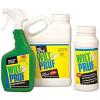Indoor Bonsai Care

When you bring your bonsai tree home, water and place in a suitable position after reading the instructions below.
NOTE: Within two weeks of getting your bonsai tree home, it’s quite normal that some of the leaves will turn yellow and fall, this happens as your bonsai acclimates to its new surroundings. Flick any yellowing leaves off and they will re-grow. Do NOT pluck them as this damages the new buds.
Watering:
• Fill a bowl or sink with tepid water. Immerse your bonsai tree so the water comes over the rim of the bonsai pot and covers the soil, and leave for five minutes. Place it on a draining board and allow the excess water to drain away.
• You must not let your bonsai tree sit in water after draining.
• If you follow this method your bonsai tree will get the required amount of water.
• For best results we recommend using a humidity tray and misting twice a day as well.
• Remember the soil should be moist to the touch at all times, if wet don’t water, NEVER let your bonsai tree dry out.
Positioning:
• Your bonsai tree needs plenty of natural light but NOT blazing midday sun as the leaves will burn and die.
• If your bonsai tree grows large leaves on long light green leggy shoots, it’s not getting enough light. Any warm, bright area will do.
• Window sills may not be the best place due to the constant fluctuation in temperature, however if a window sill is the only place you can keep your bonsai tree, be sure to rotate it every week.
• Once you have found a suitable place for your bonsai tree, leave it there so it can acclimate itself.
• You will know it’s in the right place as it will flourish and grow many new shoots. If it’s in the wrong place it will loose its leaves.
• Indoor bonsai trees will benefit from being outside in a semi-shaded area during the summer months.
Feeding:
• All bonsai trees need fertilizer to make up for the lack of nutrients normally available in the wild.
• Either use a specially formulated bonsai fertilizer or tomato fertilizer.
• We recommend that you feed once a week with half the recommended strength during summer and once a month during the winter.
• Be sure to fertilize after watering and do not exceed the specified dose as over feeding will burn the roots and possibly kill your bonsai tree.
Pruning:
• Your bonsai tree needs pruning all year round, more so during the summer.
• Just cut off the long shoots to one or two leaves to maintain the shape of your bonsai tree.
Re-Potting:
• You may need to re-pot your bonsai tree every other year (in early spring) to maintain fine, fibourous, and healthy roots.
• To do this, tease your bonsai tree out of the bonsai pot and loosen about 1/3 of the soil from the sides and underside of the root ball and trim away the long hanging roots with a pair of clean, sharp root cutters.
• Clean your bonsai pot or choose a new one.
• Re-pot using a free draining soil mix (1 part fine grit, 2 parts organic soil) or buy a pre-mixed bag of bonsai soil.
Common Problems:
• Brown, crispy leaves - lack of water. Follow watering instructions provided.
• Sticky leaves - your bonsai could have aphids, whitely or greenfly. Check the underside of leaves for both insects and eggs. To treat, place the bonsai outside and spray with a contact insecticide, be sure to cover both sides of the leaves.
• Every leaf turning yellow - over watering. Follow watering instructions provided.
• If your bonsai suffers any of the above conditions, STOP fertilizing immediately as this will do more harm than good. You can start to fertilize again only when new growth appears.
Other Great Resource:
Outdoor Bonsai Winter Care from The Bonsai Society of Upstate New York







